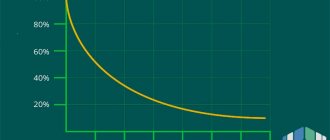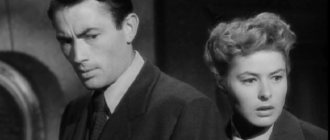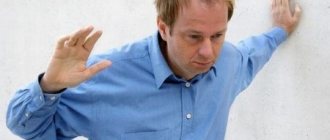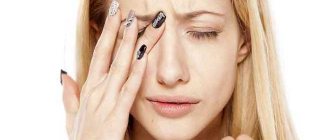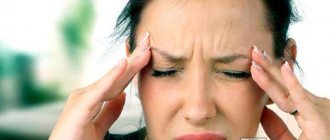Prevention of stress, diagnosis of stress, Sleep Irina Vasilyeva Surely everyone has experienced a similar feeling. You fall asleep and fall asleep and suddenly it begins to seem like you are falling. An unexpected fall does not last long. It ends with a sharp start and waking up. Or here's another example. You look at a sleeping person and see how his limbs tremble during sleep. And when he wakes up, this person cannot even remember what he dreamed about. What causes a person to startle or jerk violently in their sleep? Isn't this harmful? Or maybe this signals some kind of physiological or mental disorder? There are a lot of explanations for this phenomenon on the Internet: from scientific to esoteric. But which of them is true and which is false? Let's figure it out together.
Good afternoon, dear reader! Today we will look at all the possible causes of this condition.
Some of them will be characteristic of healthy people, others – not so healthy.
I think you can easily determine what belongs to the first and what to the second group.
Myoclonic spasms
Myoclonus is an unusual physiological phenomenon.
On the one hand, it is studied comprehensively. On the other hand, little is known about him. Scientists have found that there are 2 types of limb twitching when falling asleep: positive and negative myoclonus. Experts call “positive myoclonus” the active contraction of muscles. This is when, when falling asleep or directly during sleep, a person’s arms and legs twitch, and their eyelids tremble. Cramps when falling asleep can be expressed in twitching of the whole body. It is usually the most intense and often provokes awakening.
Negative myoclonus, on the contrary, is a complete relaxation of nerve endings and a decrease in muscle tone. The syndrome can spread to one area (for example, legs) or the entire body. In the second case, convulsive twitching is observed.
Muscle twitching during the process of falling asleep occurs in both children and adults. The movements can be:
- synchronous and asynchronous;
- rhythmic/arrhythmic;
- spontaneous;
- reflexive.
Most often, the limbs, shoulders, and facial facial muscles shudder. Physiologists explain the process of formation of these convulsions by the fact that a certain group of nerve fibers going to the muscles is suddenly simultaneously excited. Tension occurs, causing the leg, face, or entire body to twitch during sleep.
Myoclonic seizures appear in different places in the body each time
Myoclonic seizures occur for various reasons and are noted as irregular twitching of the arms or legs just before sleep or immediately after falling asleep. The following reasons cause myoclonic spasms when falling asleep:
- brain asphyxia;
- abrupt termination of sedative medications;
- abrupt termination of taking hypotonic drugs;
- mental disorders;
- degenerative processes in the cells of the nervous system;
- depression.
Myoclonic spasm has no localization. Because of this, it is natural that the patient’s leg twitches one night, and the arm twitches the next. In healthy people, a myoclonic attack can occur if the oxygen content in the air is very strong and sharply reduced.
Top 10 recommendations

- To understand why you have them, first try to analyze the events that have happened to you over the past days. Any stress, and even positively colored emotions, can provoke one-time involuntary twitches. If they occurred, then breathing exercises, massage and relaxation will help you, this will relax you and help you cope with the consequences.
- Avoid too active workouts at the end of the evening, they can have a negative effect if not organized correctly. I recommend reading an article about human biological rhythms; it contains a detailed daily schedule, following which a person can significantly simplify his life without interfering with the natural processes in the body.
- Don't overeat, especially in the evening. And in general, review your diet; it should be rich in vitamins, magnesium, calcium and potassium.
- Also, you should not abuse coffee and smoking, and especially alcohol. I described how to cope with alcohol addiction in this article.
- In the evening, take a hot bath, drink warm tea or milk, this will help the muscular system relax, and then it will not need to relieve tension at night. If you can't take a bath, you can simply steam your feet, this will bring the same result.
- Keep your feet warm, especially during cooler months.
- To prevent your arms or legs from becoming numb or twitching, waking you up, take care in advance about a comfortable body position, and temporarily avoid falling asleep in hugs, which impair blood circulation in the limbs, at least in order to investigate the cause of their occurrence.
- Start practicing yoga, it will help cope with the effects of stress, improve the quality of sleep, help fight depression and calm the nervous system. It is quite possible to master it even without going to group training, but on your own at home.
- After a hard day, it will be more effective not to think about problem situations and ways to solve them while falling asleep, but, for example, alpha visualization. Using this technique, you will not only relax your mind and prepare for rest, but also attract favorable events into your life.
- Play music that brings you pleasure and relaxation. Usually the noise of the surf, rain and other sounds of nature are recommended.
Possible reasons
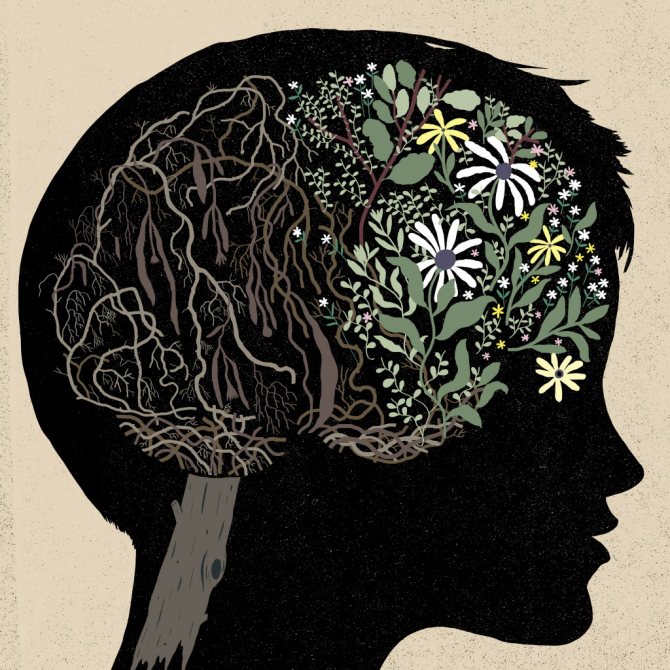
Doctors have been studying the problem of shuddering at the moment of falling asleep for a long time. Today, 4 theories have been developed as to why tremors appear in the body when falling asleep. They look like this:
- Dying states - the brain, while falling asleep, identifies changes in the body as dying and takes actions to restore active functioning. Muscle contractions occur in order to activate blood circulation in the body and the person shudders intensely. During this same period, most people experience nightmares (usually falling from a height or diving under water without the ability to emerge). Such artificial stimulation of danger projected onto a person is produced by the brain to release adrenaline, which should improve the condition. This explains most cases of why a person twitches at night.
- The transition from the stage of shallow sleep to deep sleep - during the period of deep sleep, the human body completely relaxes. If there is excess energy in the muscles, at the moment of transition from one phase of sleep to another, they are discharged by twitching. Extremely rarely, a seizure may occur.
- Stress – when stress is chronic, and negative thoughts and emotions accumulate over a long period of time, the brain begins to analyze them during the period of falling asleep, although consciousness is already turned off. Due to this activity, nerve impulses are strengthened, which leads to tissue vibration before sleep. Most often they wake up in such a situation.
- Lack of oxygen - if the oxygen content in the air is low, then the muscle cells begin to experience its deficiency, which is why the brain sends impulses that cause their contractions. This is necessary because at the moment of shuddering, blood circulation in the tissues increases and they receive the required amount of oxygen.
Most often, flinching is one-time in nature and does not appear regularly. In this condition, a person usually does not seek medical help, since twitching does not bother him.
First aid
Of course, if a muscle is cramped, you can simply lie down and wait until the condition goes away on its own and the pain subsides. However, there are rules for providing first aid for a seizure that help speed up the return to normal:
- Walking on a cold floor barefoot;
- In a lying position, stretch the sore leg and pull the toe as far as possible towards you, that is, perpendicular to the floor;
- Perform an active massage of the cramped muscle;
- Prick a little with a needle into the area of spasm.
If the pain does not go away for a long time, you can take an aspirin tablet, which improves blood circulation at the vascular level.
Folk methods for getting rid of cramps also include warm baths with sea salt, warm compresses and ointments.
Norm or pathology
Myoclonus is characteristic not only of humans, but of almost all living beings. Light tremors in the body in the form of rare single or group movements while falling asleep are considered normal. Doctors agree that this is still a physiologically determined and absolutely normal functioning of the nervous system.
The pathology is considered to be involuntary tremors that occur with varying frequency and frequency throughout the night's sleep. On the one hand, they themselves lead to sleep disturbances. A constantly startling person wakes up periodically and, as a result, cannot get a good night's sleep. His sleep phases may also be disrupted. On the other hand, myoclonic convulsions that do not stop after falling asleep may indicate disturbances in the functioning of the body.
Doctors identify the following features of cramps when falling asleep:
- They are never tied to a specific part of the body, so it is impossible to predict the appearance of twitching.
- In some cases, convulsions are pronounced in nature and are felt as a large single shudder. In others, they may have the character of a small trembling of the whole body when falling asleep (tremors).
- Doctors also consider the feeling of falling when falling asleep to be a type of myoclonic spasms.
- Myoclonus usually occurs during REM sleep. That is why it leads to awakening.
- Obsessive, recurring convulsions from night to night often accompany diseases of the nervous system (panic disorders, phobias, depression).
If a person shudders in his sleep, this may be a physiological reaction of the body or a sign of a disease. Startles are common in children. They are associated with the imperfection of the child’s nervous system and the fact that a child’s sleep differs from that of an adult in the duration of the phases.
Muscle movement may occur during the transition from one stage of sleep to another. The stages differ from each other by the different activity of cells of the nervous and muscular systems. The change of phases does not occur immediately and muscle twitching is a phase conflict. This is why a person twitches when falling asleep. The same movements can occur during the transition from the stage of slow sleep to fast sleep.
Physiological myoclonus
So, the first reason why a person shudders in his sleep is physiological in nature. Benign myoclonus occurs in 70% of people, most of whom, when waking up, do not even remember that they had strange movements.
The person already has the impression that he has fallen asleep, when suddenly a jolt occurs. Most often it manifests itself at the moment of transition from wakefulness to sleep. Most neurologists agree that physiological myoclonus should not be considered a pathology. This is a normal manifestation of the nervous system.
Physiological myoclonus occurs due to a conflict between the state of complete relaxation of the body and muscle tone. Complete relaxation refers to a situation where the nerve cells in the brain stem completely relax the muscle mass of the body before the rapid eye movement phase. This achieves the most complete and dramatic relaxation of the body. When this happens, the hypothalamus mistakenly perceives this situation as a process of dying (pressure begins to decrease, temperature drops, breathing changes from deep to more superficial).
In view of this, the brain actively shakes the body, sending a push signal. Thanks to it, the muscles contract sharply so that the vital forces of the body are renewed. After the brain has sent a powerful impulse to the muscles to prevent complete relaxation, the body shudders sharply. Actually, it is for this reason that an adult, teenager or newborn twitches in their sleep.
Physiological jerks do not indicate that a person will begin to suffer from seizure disorders. Myoclonus is of short duration and is normal for any sleep. Moreover, they are not even recorded by EEG. But there are also pathological conditions - twitching, tics, tremors, convulsive attacks. There is already a pathology here.
Physiological twitching in children
If a baby twitches in his sleep, this often also has physiological reasons. This process indicates a change in sleep phases. In children, myoclonus is observed more often, since their sleep physiology is slightly different. Thus, the deep phase of sleep in adults lasts about 3 hours, and in children it is 2-3 times less.
Why do my legs twitch?
Restless legs syndrome is another common cause of startling in sleep, which can wake the sleeper. It most often affects adults over 35 years of age, although young people are not immune from it. The phenomenon is caused by the fact that unpleasant sensations arise in the legs, which a person does not detect in a dream, but the brain gives a command to eliminate them. As a result, muscle contraction occurs, which improves blood circulation and eliminates discomfort. This explains why the legs twitch.
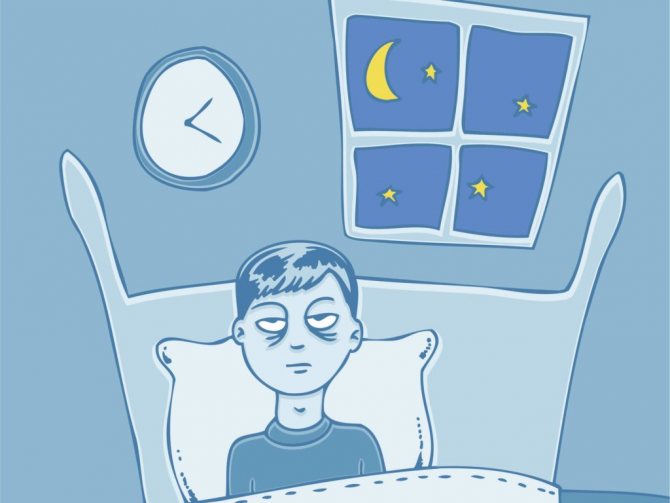
It is unlikely that you will wake up with restless legs, but if this happens, then congestion is already strong
Waking up in such a situation does not occur often, since the sleepers do not startle much, and this does not lead to changes in body position. However, the quality of sleep is greatly deteriorated, as the deep sleep phase is constantly disrupted due to vibration. Because of this, even after a rest of 8 hours, a person feels weak and general malaise.
The following causes the problem:
- lack of iron in the body;
- renal failure;
- diabetes mellitus – only type 2;
- Parkinson's disease;
- complications after surgery on the stomach and upper intestine;
- pinching of the spinal cord processes;
- varicose veins;
- severe hormonal imbalances in the body;
- venous insufficiency of the lower extremities;
- arthritis of the leg joints;
- pathologies of the cardiovascular system;
- disorders of the thyroid gland;
- traumatic spinal cord injuries.
Quite often, the appearance of “restless legs” syndrome is associated with pregnancy, when the enlarged uterus compresses the veins and impairs blood circulation in the legs, which causes twitching. If there are no other pathologies, then the condition is not dangerous and resolves itself after the birth of the child.
In cases where awakening occurs regularly when starting during sleep, the cause should be sought in defects in protein metabolism or alcohol abuse.
The legs are more susceptible to myoclonus than other parts of the body. Many people could observe how the leg twitches involuntarily when falling asleep. The main reasons for this phenomenon have already been described. It should be emphasized that leg twitching during sleep in the case of the listed diseases is the least of the evils.
If a person constantly notices that his legs twitch when falling asleep, he should definitely contact a therapist first and tell him about this symptom. The doctor will probably refer you for examination. Do not be surprised if some serious metabolic disorder or even a disease from the above list is discovered as a result.
Many people with depression and sleep disorders describe their nighttime experiences as “restless legs” (also known as Ekbom Syndrome). All these disorders must be treated. Then the unpleasant sensations associated with falling asleep will gradually pass.
Pregnant women often notice how their legs twitch while falling asleep. This is usually associated with a deficiency of iron, potassium, and some other microelements.
What to do in such a situation? First of all, consult your doctor. You may need to adjust the menu or take an additional vitamin complex. After the birth of the baby, the described unpleasant sensations will go away on their own.
Leg twitching during sleep is common in older people. This is due to changes in the functioning of the nervous system. Myoclonus cannot be neglected in this case. It is imperative to conduct an examination to exclude the possibility of serious diseases (for example, Parkinson's disease).
If you find yourself with symptoms of the above diseases that cause persistent sleep disturbances, then you need to visit a doctor. He will conduct additional tests in order to make a diagnosis. A good result is obtained from a polysomnograph examination. This device records muscle contractions when a person sleeps, which helps make a diagnosis.
Polysomnography is a modern method for diagnosing sleep disorders
When movements at night during sleep are caused by physiology, treatment is not required. Only in cases where they interfere with a good night's sleep or are associated with constant nightmares, you can contact a specialist to prescribe sleeping pills. But it's better to try:
- organize your day correctly;
- avoid too vigorous physical activity;
- do not overeat before bedtime;
- create a comfortable environment (dimmed lights, quiet music);
- take a bath with decoctions of medicinal herbs;
- drink mint tea or warm milk at night.
Trembling when falling asleep and during sleep does not always indicate illness - this is a normal physiological reaction of the body that does not require treatment. But if there is a suspicion of illness, or due to this background a person does not get enough sleep, depression appears, it is necessary to consult a specialist.
Tips on how to normalize sleep
In order for sleep convulsions in adults to occur as rarely as possible or to stop completely, you need to properly organize the culture of night rest.
- It is important to always follow a routine and go to bed at the same time, preferably at 11 pm.
- You should not watch TV at night, especially films and programs that excite the nervous system. It is advisable not to sit too long at the computer. If possible, you should remove this technology from the bedroom; the telephone is no exception.
- Before going to bed, most doctors recommend taking a leisurely walk in the fresh air or at least doing a few simple gymnastic or breathing exercises on the balcony. This will help you fall asleep quickly.
- If you don’t want to go for a walk, you can listen to light music, read a book, or meditate.
- The bedroom must be ventilated, and in the warm season the window must be left open at night.
- Just before going to bed, it is advisable to take a warm bath with aromatic salt or essential oils of lavender, rosemary, mint, and citrus fruits.
- You need to sleep in pajamas made from natural fabrics. This also applies to bed linen - it should be cotton or linen. To prevent cramps due to cold feet, you can wear thin socks.
- If a person often wakes up due to cramps that arise as a result of an uncomfortable body position, you need to purchase a good orthopedic mattress, which should be moderately hard and guarantee a natural physiological posture during sleep.
- Complete darkness and silence in the bedroom is of great importance. The sleep hormone melatonin, which affects health, is produced only in the complete absence of light and sounds. Under these conditions, the brain quickly relaxes, falling asleep occurs quickly, the body and nervous system are fully rested, which helps get rid of night cramps.
- If people shudder at night due to a deficiency of potassium, magnesium and calcium, they need to enrich their daily menu with greens, vegetables, milk and dairy products. In addition, it is necessary to reduce the consumption of drinks that contain large amounts of caffeine and have the ability to stimulate the nervous system.
Thus, following simple rules will help get rid of night cramps, spasms and twitching and will help improve the quality of sleep.
«>
Twitching in epilepsy
For patients with epilepsy, shuddering at night is quite common. More than half of patients suffer from it. Convulsive attacks occur at night and cause awakening. They tend to progress and intensify as the underlying disease develops. Gradually, the tremors are completely replaced by focal attacks.
Startling when falling asleep in adults can affect either one muscle group or several. They have attacks and a tendency to migrate, when contraction occurs, either in the leg or in the arm.
Treatment
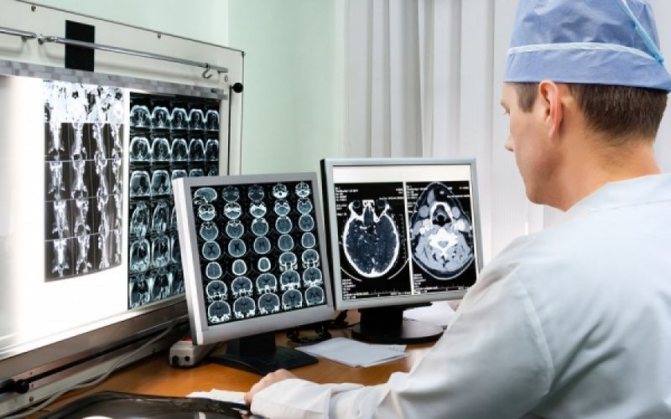
It is worth noting that all medications must be taken after diagnosis and identification of the origin of involuntary muscle contractions.
Drug treatment is prescribed only by the attending physician, since there can be many causes of the syndrome.
Anticonvulsants from the Anticonvulsants group occupy the main place in the fight against spasms.
Among the medicines, antiepileptic drugs have proven themselves:
- Barbiturate;
- Clonazepam;
- Volproate;
- Benzodiazapine;
- bioactive supplement L-tryptophan;
- Tryptophan.
Pathological myoclonus
There are also pathological causes of twitching. There are several of them, so there can be many forms of myoclonus. One of the features of this condition is that seizures can occur even during the day when the person is awake.
For example, epileptic myoclonus may occur as one of the symptoms of epilepsy. It is characterized by a constant increase in seizures. Each night a seizure may cause different muscles to become blocked. For example, on the first night there may be twitching in the hand, and on the second night - in the facial muscles of the head. Seizures, according to scientists, occur due to a lack of oxygen in the brain, which leads to pronounced degenerative cellular changes, as well as an increase in epileptic seizures.
Essential myoclonus is another pathological type of this disease. It begins to manifest itself in the patient’s childhood. In this case, the disease proceeds independently, without being combined with other pathologies.
Separately, it is worth paying attention to symptomatic myoclonus. It can manifest itself as a symptom of various brain diseases, for example:
- storage diseases - in addition to other symptoms, they are distinguished by the presence of epileptic seizures, myoclonus, as well as other manifestations;
- congenital diseases of the spinal cord, cerebellum, brain stem;
- previous viral encephalitis, for example, due to excessive reproduction of the herpes virus;
- nerve ending injuries;
- the influence of toxins, leading to the death of a number of nerve endings.
One of the features of pathological myoclonus is that a person experiences convulsions not only when falling asleep, but also during the day, while awake. This condition is most common in epilepsy. When falling asleep, the patient may twitch different parts of the body. One night the limbs are active, the other night the facial muscles are active.
The causes of seizures when falling asleep in adults in this case may lie in the area of abnormal brain activity. Some patients experience a lack of oxygen in the brain tissue, while in others changes occur at the cellular level.
In some cases, pathological myoclonus is provoked by hereditary diseases. Trembling of the limbs or facial muscles can be observed in children when falling asleep at a very early age. This is possible in the following neurological conditions:
- hereditary pathology of the cerebellum and other parts of the brain;
- epilepsy;
- disturbances in the functioning of nerve endings in the case of diseases of internal organs (liver, lungs);
- so-called “storage diseases” (they are characterized by epileptic seizures, pathological daytime myoclonus, and other less noticeable manifestations);
- viral encephalitis;
- intoxication due to drug overdose.
Sleep paralysis

. People who suffer from startling during sleep sometimes also experience such an unpleasant phenomenon as sleep paralysis. With it, a person is unable to move, experiences an acute feeling of lack of oxygen and a strong fear of death. Visual and auditory hallucinations also often appear. What makes the condition especially serious is that the victim at this moment cannot call for help, since the tongue is also paralyzed.
The phenomenon occurs due to the fact that coordination between awakening and the beginning of physical activity is disrupted. In fact, a person wakes up, but the brain has not yet registered this and does not send signals to the muscles to begin active work. In order to eliminate the phenomenon as soon as possible, a person must realize what is happening to him. As soon as this happens, the brain actively turns on and everything returns to normal.
The problem is solved by normalizing sleep and rest patterns and reducing stress loads. When the problem of sleep paralysis is eliminated, the nighttime tremors also disappear.
Twitching during sleep in children
Myoclonic convulsions in a child during sleep are divided into physiological (normal) and pathological. The reason for shuddering when falling asleep in infants is the adequate functioning and development of the brain.
The fact is that the sleep of young children is significantly different from that of an adult. Their deep sleep phase is 2 times shorter than that of a normally functioning, healthy adult. The baby twitches when falling asleep and later almost constantly due to the fact that his sleep phases change faster and his brain activity changes all the time.
Parents should not worry if their child shudders when falling asleep. This is a natural process. But if some other pathological phenomena are added to these movements (for example, cramps during the day), the baby must be examined.
Causes of flinching
There are other reasons why even a healthy person begins to shake in his sleep. So, when the body enters the paradoxical phase of sleep, it temporarily loses the ability to respond to external stimuli. But the needs do not go away. When there is a lack of a number of microelements and substances in the body, serious failures are possible. Trembling is a compensatory mechanism that allows you to avoid these disruptions and return the body to working condition.
Another cause of twitching may be a sudden stop in breathing during sleep. This is especially true for those who often snore. To know all the stops and prevent them, the brain launches a specially adapted process of flinching.
First of all, it is necessary to establish whether night tremors of the limbs are associated with natural causes or diseases. To do this, if it is impossible to identify it on your own, you should first contact a therapist. After the initial examination, he decides whether the patient needs treatment and referral to a specialist, or whether his condition is not dangerous.
If the presence of diseases is established, against the background of which the flinching appeared, it is necessary to correct them. For this, the person is referred to a specialized doctor, who determines the method of therapy. For some, a light sedative before bed is enough (for increased nervous excitability), while for others, lifelong maintenance therapy is needed (for diabetes, etc.).

You need to drink more water - regular, not carbonated
Patients must improve their drinking regime. This is due to the fact that if the body does not receive enough fluid, a person develops chronic dehydration. Because of this, the blood becomes excessively thick and night twitching of the body, legs or one leg occurs, which should improve metabolic processes in the tissues. The easiest way to fix this problem is. It is enough just to drink 6 glasses of clean water without gas every day, not counting liquid food, tea and coffee.
For epilepsy, the use of antipsychotics is indicated to eliminate night shudders or microseizures. They allow you to correct the state of the nervous system and eliminate the problem.
Prevention
For some, shaking at night bothers them and prevents them from sleeping. In this case, you need to do something to make it easier to fall asleep. For example, you should follow these tips:
- start following a sleep schedule;
- do not eat at night;
- exclude evening tea and coffee;
- quit smoking.
As a last resort, if the day has been very busy, you can take a mild sedative tablet, for example, Novo-Passit, and go to bed. This will prevent you from feeling unnecessary twitching at night.
So, in most cases, shuddering during sleep is a physiological norm, but more complex situations are possible, in which it is better to consult your doctor.

I am glad to welcome you, dear readers of my blog! Has it ever happened that when you fall asleep, you startle sharply because of the feeling that you are falling, stumbling, or, for example, kicking a ball? This sometimes bothers loved ones or even frightens them, imprinting itself very clearly on the mind. I've had situations like this happen a couple of times, and I decided to study in more detail why this happens. As it turns out, there are a lot of factors that cause the body to twitch during sleep, and some of them require medical intervention. And the involuntary twitching itself was called Simmonds’ nocturnal myoclonus.

